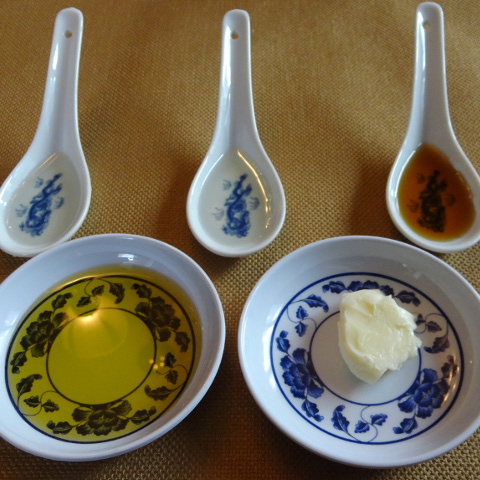Fats and Oils

We here at ONK love to keep our kitchen and pantry fully stocked. It makes mealtime a lot easier when you know you have everything you need. Fats and oils are the start of most recipes. Coat your pan or meat in oil, or melt a couple tablespoons of butter in a pan. But with so many choices out there what do you choose? And once you have all these choices in your kitchen which of the oils do you use in your dish?
Well you’ve come to the right place; let’s talk fats and oils!
Butter: If you grew up in the 90’s, no one used butter, everyone used margarine. Then came the issue of trans fats. Margarine is full of them! Additionally, margarine is not food it is plastic; mold and bacteria won’t even eat it so neither should we. Butter however, is sweet, creamy goodness. The downside of butter in cooking is its low smoke point. Milk solids burn above 300 degrees Fahrenheit so it’s not good for frying but don’t hold that against the churned god of the kitchen. Butter is great to cook eggs and as a start for sauces or soups. A little bit of butter can also make even the plainest steamed veggie more palatable.
Olive Oil: Somewhere around ten years ago Olive Oil became all the rage, and rightly so. It’s a great ingredient. I use more Olive Oil than any other oil in the kitchen. It’s touted as the heart healthy option. Though no causal relationship has been established, there is evidence that Olive Oil used in place of other fats can help lower cholesterol, reduce inflammation, and control the balance of omega 3 and omega 6 fats in the blood. Olive Oil still has a fairly low smoke point, so it’s not good for deep frying, but for most sautéing on the stove top, it’s a perfect lubricant. Be careful of the Olive Oil you select for use in cooking. Some Olive Oils have a very strong flavor. While usually associated only with cold pressed Extra Virgin Olive Oils, there are some Virgin and refined Olive Oils that still pack a significant flavor. For use in the kitchen, I prefer Partanna, a Sicilian cold pressed Extra Virgin Olive Oil. It has a light flavor but is the perfect viscosity and for the price it lasts a long time.
Vegetable Oil / Vegetable Shortening: I know people use this for frying, but really it’s not good for you at all. I don’t use it unless I have to. I will use it occasionally in baking, and even then only when I have no other choice, otherwise it remains on my shelf.
Canola Oil: While I usually don’t use a lot of canola oil except while baking, it is a great alternative to Olive Oil. It has similar cholesterol lowering properties. Canola Oil is great to use because it holds up to high temperatures. The smoke point for refined Canola Oil can be above 400 degrees. It’s great for frying chicken or French fries and is useful in baking due to its very light flavor. Despite Canola Oil’s versatility for general kitchen use, I still prefer Olive Oil.
Peanut Oil: The benefit of Peanut Oil is its very high smoke point, which can be as high as 450 degrees Fahrenheit for refined oils. This makes it perfect for deep frying, and it’s one of the most frequently used oils for that purpose. Peanut Oil is also used a lot in Asian cooking (it’s what gives sweet and sour chicken it’s nutty flavor). The issues with peanut oil are a heavy flavor, mold, and allergens. Peanuts contain mold that creates aflatoxin, which can contaminate the oil. Most (not all) Peanut Oils are highly processed to remove most allergens, however avoidance is prudent for people with peanut allergies. I tend not to keep it in the house, and only pick some up when I’m planning on making Chinese, or other South Asian dishes.
Sesame Oil: This is more of a specialty ingredient than the other oils mentioned here. Regardless of more limited uses, Sesame Oil has some tremendous applications. It has a great nutty flavor and a high smoke point. Even better, it’s full of antioxidants. I don’t use a lot of it, but whenever I’m making Chinese or South Asian food I try to use it to add some great flavor to the dishes.
There are probably another twenty oils out there I can go through, but honestly these six are the most accessible, and they will cover most needs in a family kitchen. At the very least, I always make sure to have Butter and Olive Oil. Because I bake a lot, I usually also keep Canola Oil. The other oils I usually only have in the house when I’m planning a specific meal or have recently made something that needed one.


